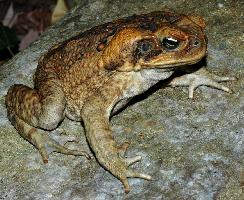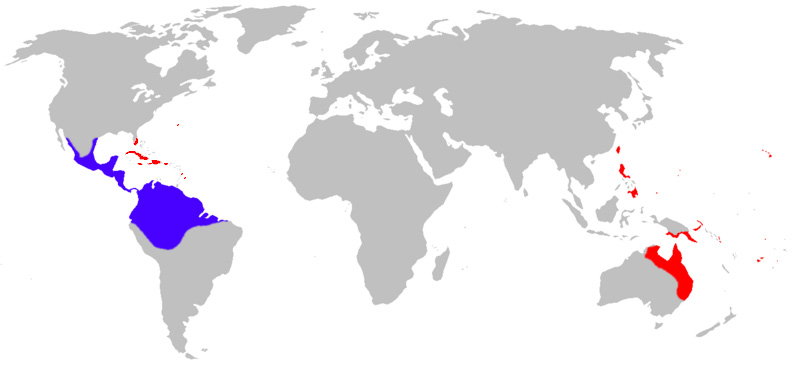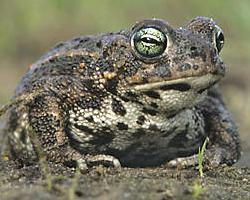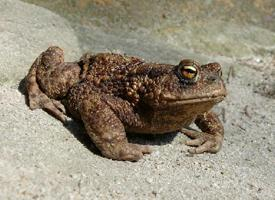
Greutăți și măsuri
| Lungime | de la 10 la 20 cm |
|---|
Date biologice
| Durata de viață | de la 10 la 15 ani |
|---|
Starea de conservare
| Amenințat |
Descrierea animalului
The Cane Toad (Rhinella marina), originally native to South and Central America, is a large, terrestrial amphibian that has gained notoriety for its rapid spread and ecological impact in regions where it has been introduced. Recognizable by its robust, warty skin and large parotoid glands located behind the eyes, which secrete a potent toxin, this species has become a symbol of invasive ecological disruption.Adult Cane Toads typically measure between 10 to 15 centimeters in length, though individuals exceeding 20 centimeters have been documented, making them the largest of the toads. Their skin color can vary widely, from olive-brown to yellowish, and is covered in warts, giving them a distinctive, rugged appearance. These physical adaptations are not just for show; the skin texture helps in camouflage, while the toxins offer protection against predators.
The diet of the Cane Toad is one of the factors behind its successful spread. Being opportunistic feeders, they consume a wide range of foods, from insects and small mammals to birds and other amphibians. This dietary flexibility allows them to thrive in a variety of environments. Their reproductive habits also contribute to their invasive potential. A single female Cane Toad can lay thousands of eggs at a time, which are deposited in long strings in water bodies, leading to rapid population growth.
Originally introduced to various countries as a biological control method for agricultural pests, the Cane Toad has since become an ecological menace. In areas like Australia, where they have no natural predators, their populations have exploded, leading to declines in native species through competition and predation. The toxins they secrete can be lethal to many native predators unadapted to dealing with them, further exacerbating their impact on local ecosystems.
Efforts to control the spread of the Cane Toad have included physical removal, fencing to prevent their migration, and research into biological control methods. However, these efforts have had limited success, and the Cane Toad remains a persistent invasive species in many parts of the world.
Despite their negative reputation, Cane Toads exhibit fascinating aspects of adaptation and survival. Their ability to thrive in diverse environments, coupled with their unique defense mechanisms, make them a subject of interest in the study of invasive species and their impacts on global biodiversity. Nonetheless, the challenge they pose to native ecosystems underlines the complexities of introducing species into new environments and the unforeseen consequences such actions can have.
Harta răspândirii

Animale similare
Fotografii noi cu animale
Top 10 animale
- Dolphin gull (Leucophaeus scoresbii)
- Diana monkey (Cercopithecus diana)
- Moustached guenon (Cercopithecus cephus)
- Stone loach (Barbatula barbatula)
- Greek tortoise (Testudo graeca)
- Galápagos tortoise (Geochelone nigra complex)
- Japanese macaque (Macaca fuscata)
- Russian tortoise (Testudo horsfieldii)
- Common flying dragon (Draco volans)
- Galápagos penguin (Spheniscus mendiculus)


